Search Results for Tag: Nepal
Return to Manaslu
Manaslu, next attempt! The South Tyrolean Tamara Lunger and the Italian Simone Mono flew back by helicopter to the base camp at the foot of the eight highest mountain in the world. In early March, the two climbers had fled Manaslu due to heavy snowfalls and extremely high avalanche danger. It looks as if our camp was quite destroyed”, Tamara wrote in her blog.
![]() read more
read more
Two fatalities on Annapurna
 The joy at the first summit successes of the spring season on one of the eight-thousanders in Nepal was overshadowed quickly. The news that 13 members of an expedition organized by the Nepalese operator Dreamers Destination had reached the summit of 8091-meter-high Annapurna on Tuedasy had just faded away when it was followed by bad news: The 36-year-old Finn Samuli Mansikka and the 35-year-old Pemba Sherpa fell to death during the descent. On Mansikka’s website his death was confirmed.
The joy at the first summit successes of the spring season on one of the eight-thousanders in Nepal was overshadowed quickly. The news that 13 members of an expedition organized by the Nepalese operator Dreamers Destination had reached the summit of 8091-meter-high Annapurna on Tuedasy had just faded away when it was followed by bad news: The 36-year-old Finn Samuli Mansikka and the 35-year-old Pemba Sherpa fell to death during the descent. On Mansikka’s website his death was confirmed.
![]() read more
read more
Brice: “Detrimental to Nepalese tourism”
The decision of the Nepalese Government to extend last year’s Everest permits until 2019 came late, very late. “The Everest season starts in a few days, my staff are already on their way to Base Camp, so our planning has been going on for months”, Russell Brice, head of the New Zealand expedition operator Himalayan Experience, writes to me. “Food, oxygen and equipment are already in the Khumbu and members will be arriving in Kathmandu as from Monday next week.” He has some members that were at Everest last year coming back this year, says Russ. There is no sign of euphoria in his words about the decision to prolong the permits.
![]() read more
read more
Everest permits extended
This decision was really overdue. The Nepalese government finally decided that the permits to climb Mount Everest in 2014 remain valid until 2019. Shortly after the avalanche in the Khumbu Icefall on 18 April 2014 that had killed 16 Nepalese climbers, the spring season de facto had been terminated. More than 330 foreign climbers left the highest mountain in the world, without having set foot on it. Even then government officials in Kathmandu announced that the permits for the 39 expedition groups would retain their validity for five years. However, the words were not followed by deeds. Instead, there were rumors about government plans to extend the permits only for groups. The climbing scene was outraged rightly. If in this case e.g. only one climber would have used the permit of 2014 to climb Everest in 2015, the other group members not in attendance would have been empty handed. Now, this regulation is apparently off the table.
![]() read more
read more
Kaltenbrunner: “All Everest parties around one table!”
It has become quieter around Gerlinde Kaltenbrunner. A fact that she actually likes. The 44-year-old Austrian is still a sought-after speaker. So Gerlinde can not complain about a lack of work. But she has enough time to travel around. Without any pressure – that disappeared after she had successfully completed her big project by climbing K 2 in 2011: She was the first and so far only woman in the world who climbed all 14 eight-thousanders without bottled oxygen. Our paths crossed on Mount Everest in 2005, when she tried (in vain) with Ralf Dujmovits and Hirotaka Takeuchi to climb the North Face and I reported about it. In 2010, she reached the summit via the Tibetan normal route. I met Gerlinde at the trade fair ISPO in Munich a week ago and we talked about Everest.
Gerlinde, you climbed Mount Everest as well as the other 13 eight-thousanders without supplemental oxygen. At the moment there are a lot of discussions about what happens on the highest of all mountains, especially because of the avalanche disaster and the subsequent end of all expeditions on the Nepalese side in spring 2014. The Sherpas revolted. Did this conflict boil up and over?
![]() read more
read more
Sought: Himalayan Mountain Hut
As in the Alps, mountaineers in the Himalayas shall soon find shelter in mountain huts. Not in simple wooden or metal sheds. The new huts shall be functional, low maintenance, not too expensive, but, please, also nice and comfortable. The Nepal Mountaineering Association (NMA), in cooperation with the Nepalese development programme Samarth, announced a competition for architects and designers to find “an innovative high altitude accommodation unit which will be the first of its kind ever to be established in Nepal”.
![]() read more
read more
Many question marks before spring season on Everest
The same procedure on Everest as every year? Probably not, but a reliable forecast is difficult. “There seem to be less people on expeditions and also less people trekking in Nepal”, the New Zealander Russell Brice replies to my question which influence the avalanche disaster on Good Friday 2014 and the subsequent end of all great expeditions on Everest south side will have on this year’s spring season on the highest mountain in the world. “It seems that more people want to go to North side, and less people to South side”, says the head of the expedition operator Himalayan Experience. However, Brice withdrew his tendered Everest expedition in Tibet and decided to just operate on the south side this year.
![]() read more
read more
Instant Everest
A characteristic of our time is that nobody has time – or does not take his time. That affects mountain tourism too. For years, German operators note a decreasing interest in expeditions that take 50 or even 60 days. Simultaneously, more climbers tend to book trips for which they need only 30 leave days. In other words, expeditions to 7000ers are booming, those to 8000ers are ailing. Apparently, the trend “the shorter, the better” also applies to trekking. Experts in Nepal have called to change with the times by offering shorter treks. They said that an increasing number of trekking tourists in Nepal were coming from China and Southeast Asian countries – and those trekkers simply had not time for a three-week trip on the Annapurna circuit or to trek to Everest base camp.
![]() read more
read more
The litany of the (Everest) ladder
A ladder at the Hillary Step? This story just won’t die. Last spring, a member of the Nepalese government had given a tip to some journalists that there were considerations in Kathmandu about this subject. After this year’s General Assembly of the International Climbing and Mountaineering Federation (UIAA) at Flaggstaff in the USA a few days ago, the issue was item 1 of the final news release. “As one of the most iconic landmarks of the world, Mount Everest belongs to all of mankind”, the UIAA statement reads. “Thus, the ascent of this magnificent mountain should be reserved to those who acquired the skills and the experience needed to reach the highest point of the world.”
![]() read more
read more
German doctor wants to help Sherpa families in the long term
18 April has changed many things: on Mount Everest, in the lives of the families of the 16 avalanche victims – and also for Matthias Baumann. The 42-year-old trauma surgeon from the German town of Esslingen was the expedition doctor in the team of the Argentine twin brothers Damian and Willie (Guillermo) Benegas and actually wanted to climb Everest in his second attempt, on the Nepalese south side. In 2011, his first attempt on the Tibetan north side had failed at 8600 meters: When he wanted to change his oxygen bottle at the Second Step, the key point of the normal route, Matthias realized that his Sherpa had packed an empty instead of a full bottle.
Three years later, this spring, Baumann climbed through the Khumbu Icefall, on the day before the avalanche. “I knew that avalanches had been coming down from the West Shoulder of Everest for four or five years. Up there, the seracs are threatening”, Matthias told me. Even if the fun at climbing gained the upper hand, the respect remained. “I was always looking up to the seracs.” On the following day, the Khumbu Icefall became a death trap for 16 Nepalese climbers. With other physicians, the German doctor took care of the injured climbers who were brought down to the base camp. After the end of the expedition Matthias visited almost all the families of the Nepalese who had lost their lives – and launched a fundraiser for them.
![]() read more
read more
End of the season on Everest? Two women say: No!
Is there still some climbing possible on the Nepalese side of Mount Everest? The “Himalayan Times” reported that the Chinese female climber Wang Jing was with seven Sherpas on the way to base camp. The 40-year-old wanted to climb the highest mountain on earth. Wang was already once on the summit of Everest, on 22 May 2010, becoming the first Chinese woman who climbed the mountain from the south side. In her home country she is a star. Wang has written a book about her mountaineering and is leading an outdoor outfitter in Beijing. Everest is part of her “Project 7+2”. She wants to scale the “Seven Summits”, the highest peaks of all continents, in record time and in addition reach the North and the South Pole.
![]() read more
read more
Help for families of avalanche victims on Everest
Waiting for the calm after the storm. Currently the wind is blowing strongly in the summit region of Mount Everest – with speeds up to 60 knots (about 110 km per hour). A summit attempt of one of the about ten teams on the Tibetan north side of the mountain is out of question. Not until 16 May a good weather window with low wind is expected. On the south side of Everest, according to the U.S. expedition leader Eric Simonsen, the “Icefall doctors” brought down their ladders and ropes from the Khumbu Icefall. Until next season, the material is deposited in a storage in Gorak Shep, the last permanently inhabited small village near Mount Everest at 5200 meters. Thus there will be definitely no climb to the 8850-meter-high summit from the Nepalese side this spring. This week in Kathmandu, the Japanese climber Ken Noguchi presented on behalf of his environmental protection organization “Seven Summits Actions for Sustainable Society” a donation of $ 100,000 to Ang Tshering Sherpa, president of the Nepal Mountaineering Association (NMA).
![]() read more
read more
News from the North (of Everest)
It is time to look to the north side of Mount Everest. After the early end of the spring season on the Nepalese south side because of the avalanche accident in the Khumbu Icefall with 16 dead, everything is proceeding on schedule on the Tibetan side of Everest. About 100 climbers have got a permit of the China Tibet Mountaineering Association (CTMA) to climb on the north side of the highest mountain in the world. The members of an expedition from Malta have already climbed to Camp 2 on 7500 meters by mid-week. “We need to wait for our summit window”, expedition leader Greg Attard reported. “The team is performing very well. Everyone is exhausted but excited and in good health.”
![]() read more
read more
Death trap Khumbu Icefall
The very first climbers had respect for the Khumbu Icefall. This is underlined by the nicknames which the members of the successful British Everest expedition 1953 gave to the risky passages through the labyrinth of ice: “Hillary’s Horror”, “Mike’s Horror”, “Atom Bomb area”. The icefall was “the key to all attempts on the south side of Everest”, wrote Sir Edmund Hillary, the New Zealander, who, together with Sherpa Tenzing Norgay, stood first on the 8850-meter-high summit. Since then about 40 climbers, most of them Sherpas, were killed in the Khumbu Icefall by avalanches from the west shoulder or collapsing seracs. In recent years, high temperatures have even increased the danger of avalanches. For this reason, the New Zealand expedition organizer Russell Brice had abandoned his expedition in 2012.
No hope for missing climbers
The disaster on Friday was the worst in the history of Mount Everest. By now 13 dead bodies have been recovered from the ice and snow. There was no more hope to find the three still missing climbers alive, said a spokesman of the Ministry of Tourism. All victims are Nepalis, most belonged to the ethnic group of Sherpas. They all were carrying material and food from basecamp to the camp above the icefall, when they were hit by the ice avalanche. They had no chance to escape.
![]() read more
read more
Goettler is going to climb Mount Everest
That was a short home leave. Just one month after his return from Nanga Parbat David Goettler has packed his bags again. His goal this spring: Mount Everest. “To climb Everest via the normal route without supplemental oxygen is challenging enough. That would be interesting”, David had told me last August when I had asked him whether the highest mountain in the world was an attractive goal for him. Now the 35-year-old climber is putting this project into action. He wants to climb Everest via the normal route on the Nepalese south side of the mountain, David writes me while trekking from Lukla to Namche Bazaar. “Without bottled oxygen and high porters.” I want to know whether he is a member of a team. “I and 600 others … ;-)”, replies Goettler. “As a team, I have only myself !”
![]() read more
read more



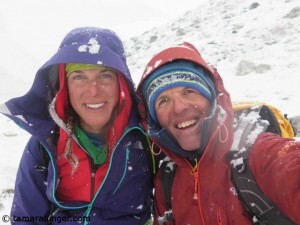

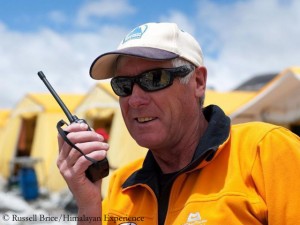
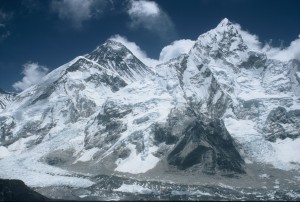
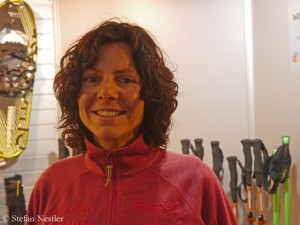
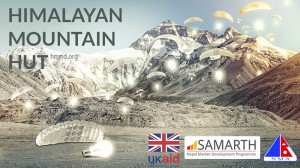
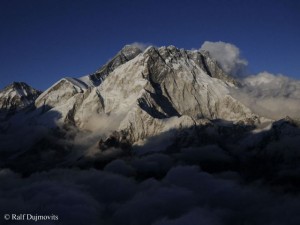
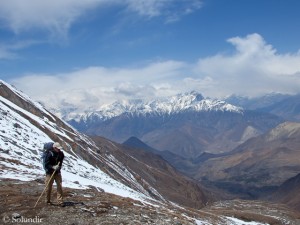
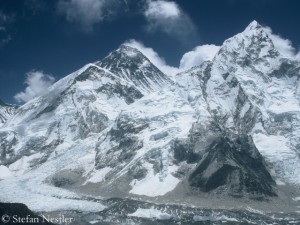
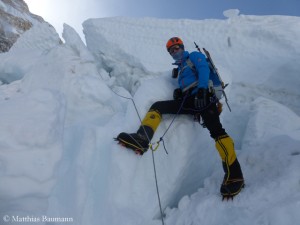
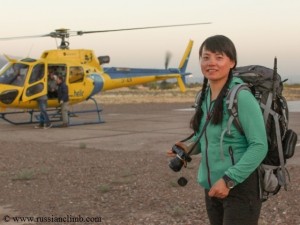
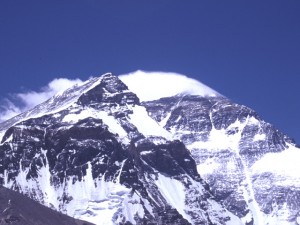
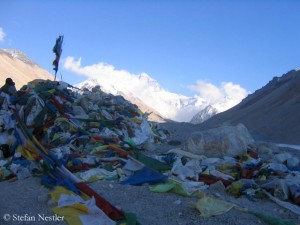
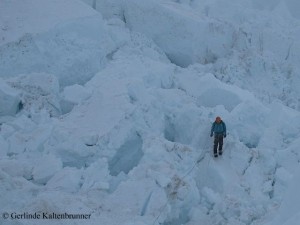
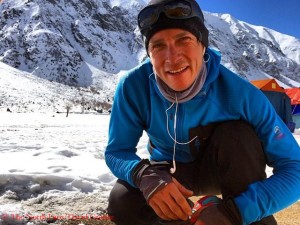





Feedback